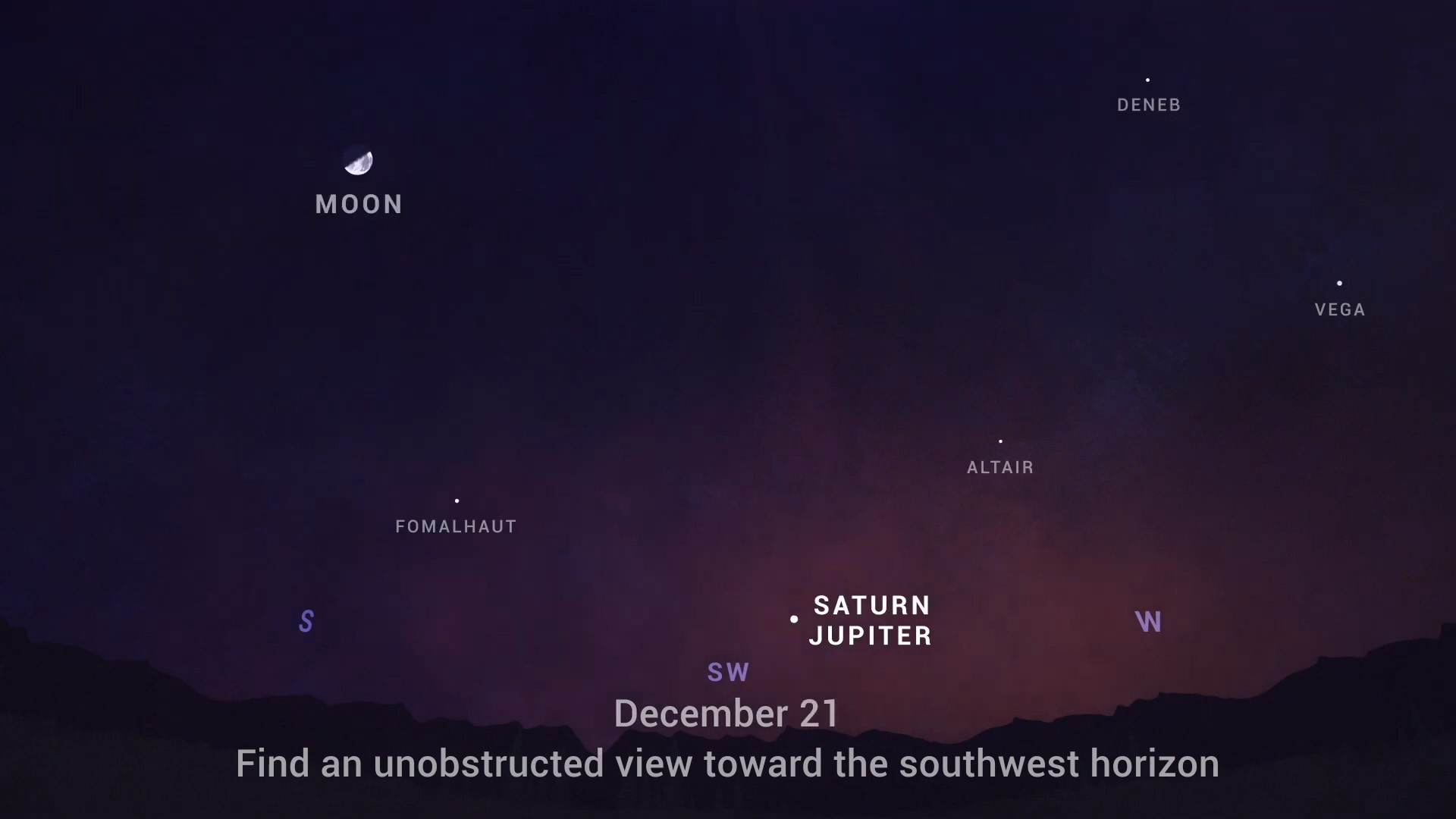Four tips and takeaways from astronomer Cullen Blake on the upcoming alignment of Jupiter and Saturn and how to best catch a glimpse of the ‘great conjunction.’


During the past several weeks, Jupiter and Saturn’s orbits have been slowly approaching one another in the early evening sky. On the night of the winter solstice, the two gas giants will appear closer to one another than they have been for the past 400 years. Known as the “great conjunction,” this bright planetary alignment will be easily visible just after sunset.
To learn more about this rare event and how to best catch a glimpse of the great conjunction, Penn Today spoke with astronomer Cullen Blake, who shares four tips and takeaways for making the most of this end-of-the-year celestial spectacle.
What is a planetary conjunction?
A conjunction happens when two planets in the same solar system appear to pass extremely close to one another in the sky. “From our perspective, we’re closer to the sun than Jupiter and Saturn. That means when we look out at the night sky every few hundred years, these two planets align and will be located in the same part of the sky,” says Blake.
The orbits of the planets can be thought of as a racetrack, he says, with Earth circling the Sun more quickly on an inside lane while Jupiter and Saturn move more slowly in the outer lanes. A conjunction happens as Jupiter begins to “pass” Saturn on the inside and overtakes the slower-moving planet, which happens on the night of the solstice.
Because each planet in the solar system has its own orbital period—the time it takes to complete its rotation around the sun—the orbits of individual planets don’t coincide with each other very often. “Our moon comes back to the same position every 28 to 29 days, while Jupiter is going around the sun within a period of 12 years and Saturn of 29.5 years,” Blake says. “If you have two things going in orbit at that period, they only line up quite rarely.”


According to NASA, it has been nearly 400 years since Jupiter and Saturn were this close to one another, but that event, in 1623, wasn’t visible in the night sky, so it’s now been nearly 800 years, in 1226, since the great conjunction has been as visible as it is this year.
How close is ‘close’?
For stargazers on Earth, the angle in the sky will be incredibly small—about 0.1 of a degree. “If you hold up your little finger at arm’s length, it will cover both planets,” says Blake of the level of closeness as perceived here on Earth.
In terms of actual distance, on the night of the solstice Jupiter and Saturn will be around 4 astronomical units (AUs) apart. That’s four times the distance between Earth and the sun, or around 400 million miles. When Jupiter and Saturn are on opposite sides of the solar system from one another, they are around 14 AUs apart.
No fancy telescope needed, just good timing, clear weather, and a pair of binoculars
To get the best glimpse of the great conjunction, Blake suggests finding a place with a clear line of sight towards the southwestern sky right at sunset. “During the hour after the sun goes down, it will be easy to see and very bright; you might even think it’s a plane,” he says. “It’s surprising how quickly after sunset you can start to see it.”
A clear evening makes for the best viewing, but even under thin clouds the conjunction should still be visible. There might also be a long enough break in the clouds to catch a glimpse—colloquially referred to by astronomers as a “sucker hole”—but, if not, Blake suggests trying again after the solstice on a clearer night. “It should be amazing for the next few days,” he says. “You will be able to see them separating after the solstice, so it will still look neat.”
There’s also no advanced astronomical equipment needed. Because of how large and bright the two planets are, a standard pair of binoculars will do just fine, says Blake. “Even with the kind of binoculars you have at home, looking at Jupiter and Saturn is awe-inspiring in terms of how much detail and color you can see,” he says.
Be sure to take advantage of this rare celestial opportunity
Blake hopes that people take the time to get out, while staying warm and socially distanced, to see this rare event. “It’s a great opportunity, especially when it’s easy to catch a glimpse of something neat in sky, and I hope that it makes people excited about astronomy,” he says.








































